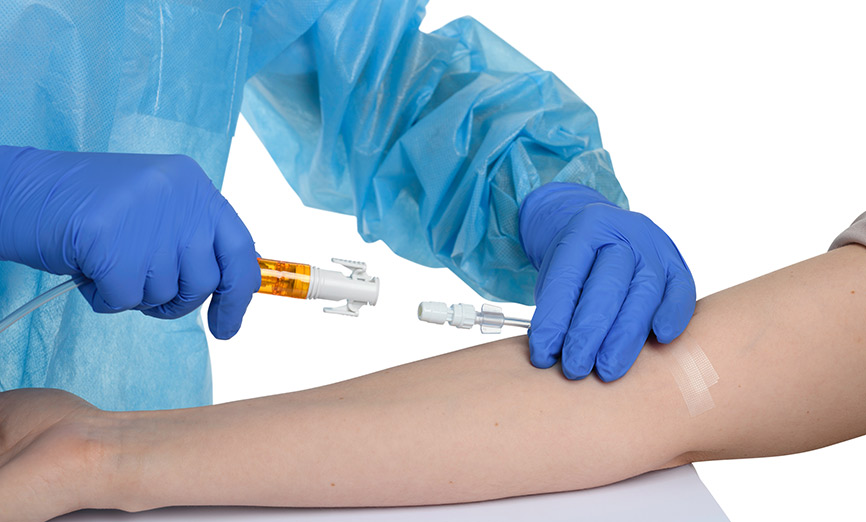What is Closed Administration?
By definition, closed system drug-transfer devices are "a drug transfer device that mechanically prohibits the transfer of environmental contaminants into the system and the escape of the hazardous drug or vapor concentrations outside the system6." This means nothing can enter or escape the device during any preparation or workflow stage. Closed administration, achieved by CSTD use, ensures a contained and sterile drug delivery system.
Whenever someone is working with hazardous drugs, they're at risk for exposure — whether transporting, compounding, preparing, or even disposing of them. CSTDs allow the safest possible preparation workflow, from start to finish, including the administration of hazardous drugs.
Given the long-term health risks of hazardous drugs, protecting both healthcare workers and patients from potential exposure is essential. Yet, patient rooms represent a high contamination risk area. For example, 75% of hospital wipe samples showed hazardous drug contamination on surfaces and other public areas1. In wipe tests, IV poles, toilet floors, and a waste cover showed the highest concentration of contamination3. These are all places that both nurses and patients come in contact with throughout the day.
So while anyone working in the vicinity of hazardous drugs needs to take careful precautions, nurses who routinely administer chemotherapeutics benefit the most from a closed administration system.
